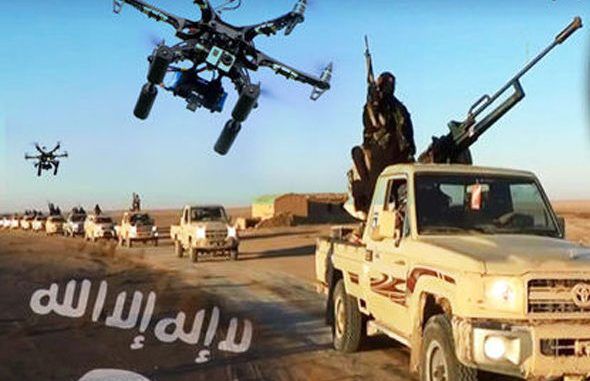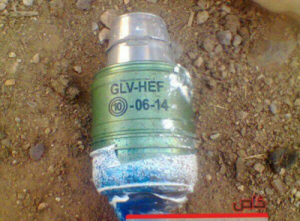
The Syrian army shot down an ISIS drone that was reportedly targeting civilians in eastern Syria on Wednesday.
The pro-government National Defense Forces (NDF) downed an ISIS attack drone in the Homs Governorate, the NDF’s official media account reported on Wednesday night.
The drone was reported to be carrying a NATO-Bulgarian GLV-HEF projectile.

BYPASS THE CENSORS
Sign up to get unfiltered news delivered straight to your inbox.
You can unsubscribe any time. By subscribing you agree to our Terms of Use
Syrian Army shot down a Daesh(ISIS) drone that dropped a NATO-Bulgarian GLV-HEF projectile on a home in Abu Alalaya,Homs CS injuring a child pic.twitter.com/YyXiUt3WAk
— M Green (@MmaGreen) April 19, 2017
Al Masdar News reports
According to the NDF, their forces in the village of Abu Al-Alaya downed the Islamic State attack drone while it was flying over their positions and bombing civilians in the area.
The bomb used by the Islamic State to attack the civilians of Abu Al-Alaya was identified by the Syrian military as a NATO-sponsored GLV-HEF projectile, which is produced in Bulgaria.
ISIL has been using these projectile bombs to harass the civilians in east Homs and Deir Ezzor for several months now, forcing the Syrian military to constantly monitor these villages and towns in eastern Syria.
According to Russia Insider there’s quite a lot of Bulgarian munitions that have “ended up” in Syria:
On 21 February 2016, the Abkhazian Network News Agency (ANNA News) and Frontinfo posted some footage seemingly filmed near Nabi Younes in Latakia Governorate, Syria. Amongst the footage is a fired cartridge case from a 40 × 46SR mm high explosive fragmentation (HE-FRAG) round produced in Bulgaria. The Arsenal 40×46 RLV-HEF round is of the 40 × 46SR mm calibre common amongst NATO states and other users, and produced widely around the world. The Arsenal RLV-HEF is built around the GLV-HEF projectile which delivers an explosive charge of 40 grams of A-IX-1 (96% RDX phlegmatised with 4% paraffin wax) out to some 400 m. Ammunition of this type is most commonly employed with under-barrel or stand-alone grenade launchers, including multi-shot varieties documented in service with Syrian opposition groups, such as the Croatian RBG-6.
What is particularly interesting about the cartridge case is that it indicates that the round in question was produced in 2014. The presence of this cartridge case in Syria is clear evidence of the recent supply of ammunition during the ongoing fighting in Syria. Whilst perhaps not especially noteworthy in its own right, it is another data point that ARES and other organisations can record.



